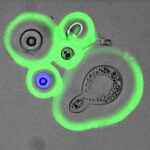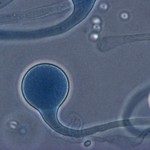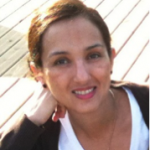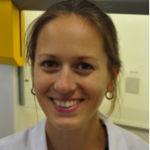Link to Pubmed [PMID] – 39395429
Link to DOI – 10.1016/S2666-5247(24)00139-3
Lancet Microbe 2024 Oct; (): 100907
Cladophialophora bantiana is one of the most virulent phaeohyphomycetes, typically causes non-angiogenic single (or sometimes multiple) cystic brain lesions, and has resulted in a mortality rate of up to 70%. Most C bantiana cases are described either in a series of isolated reports or in very small cohorts. The aim of this retrospective nation-based study was to share the data on C bantiana phaeohyphomycosis cases reported in France and French overseas territories over the past two decades to improve understanding of this disease.Patients with C bantiana infection were processed through the active surveillance programme of invasive fungal infections launched by the National Reference Center for Mycoses and Antifungals, Institut Pasteur (Paris, France), and the French Surveillance Network of Invasive Fungal Infections, which involved 29 hospitals from mainland France and overseas French territories. Only proven and probable cases of infection, according to the revised and updated consensus definitions from the European Organization for Research and Treatment of Cancer and Mycoses Study Group, were included in the study. Patients were diagnosed or confirmed, or both, using a polyphasic approach at the Institut Pasteur between 2002 and 2022. Patients were separated into two groups: those with CNS involvement and those with no CNS involvement. The primary outcome was the survival rate.A total of 23 patients with a C bantiana invasive infection were included during the study period (Jan 1, 2002, to Dec 31, 2022). The median age was 56 years in the CNS involvement group and 65 years in the non-CNS involvement group. Until 2021, the annual number of cases varied between zero and two, with six cases observed in 2022, the warmest year recorded in France since 1900. CNS involvement was observed in 15 (65%) patients, including three disseminated cases; skin and soft tissue involvement in seven (30%) patients and an isolated lung infection in one case. Diabetes was observed in five patients, and any immunodepression factor was observed in 14 (61%) of 23 patients. When considering only patients with CNS involvement, 9-month survival appeared higher in patients who underwent exeresis or large drainage (three [75%] of four patients vs three [27%] of 11 patients; p=0·24) and significantly higher in those treated for 2 or more weeks with triple antifungal therapy (liposomal amphotericin B plus posaconazole and flucytosine; seven [78%] of nine patients vs one [17%] of six patients; p=0·040). Two patients were treated with excision surgery alone (one patient with success, and the other patient lost to follow-up).This study shows that the clinical presentations and underlying medical conditions of C bantiana infections are more diverse than previously described. It also emphasises a significant difference in mortality rate between those with and without CNS involvement. The prognosis improved when surgery was performed and triple antifungal therapy was administered. Such rare and devastating invasive fungal infections should be managed by a multidisciplinary team.Santé Publique France.







